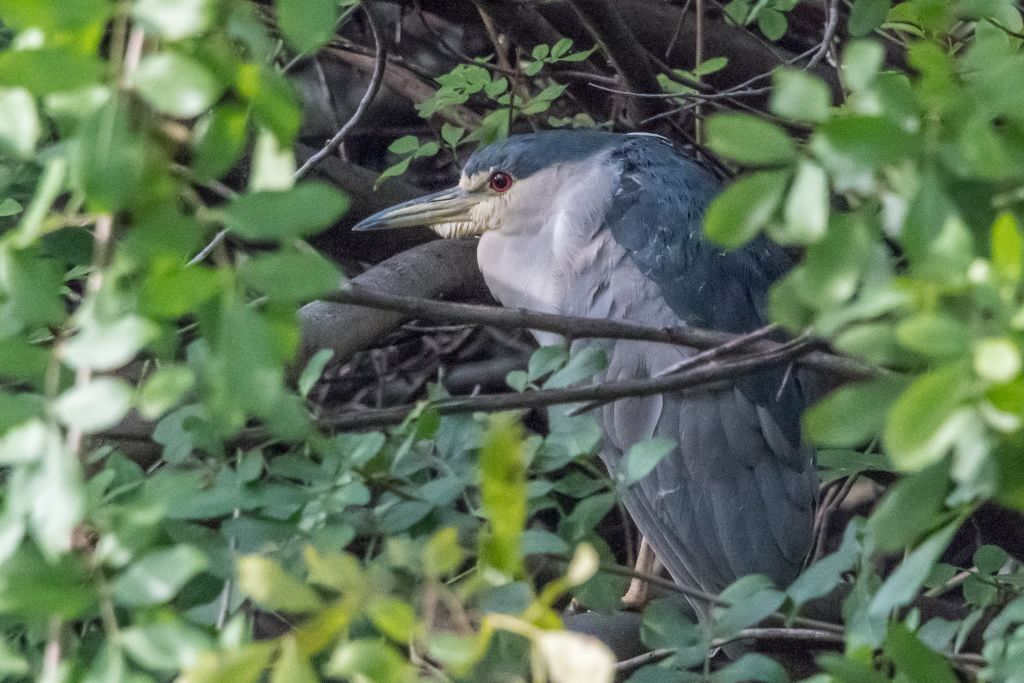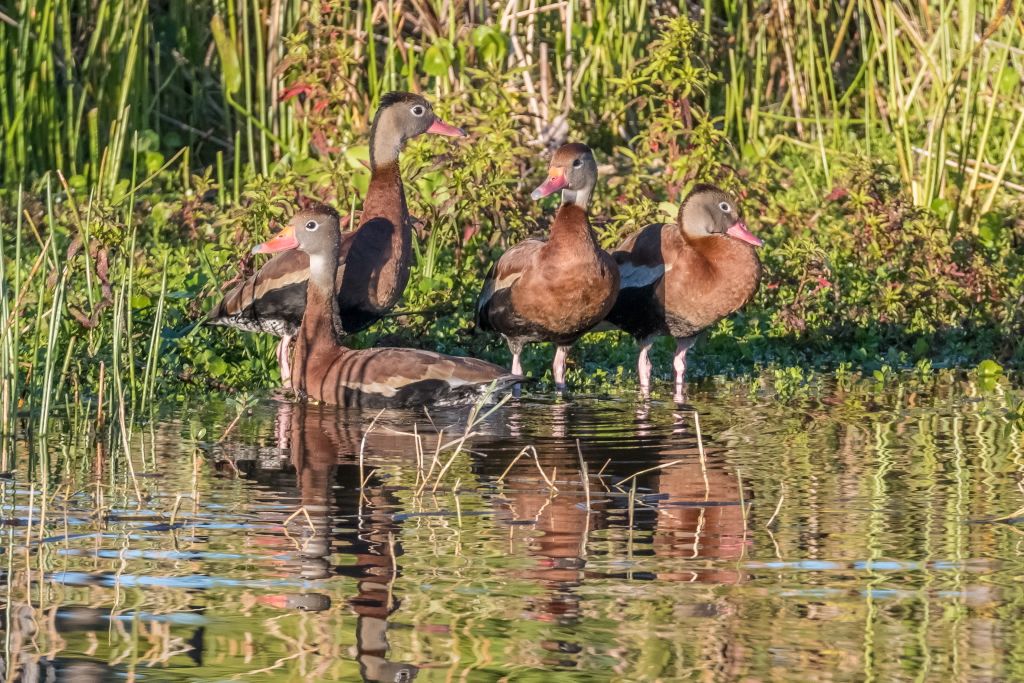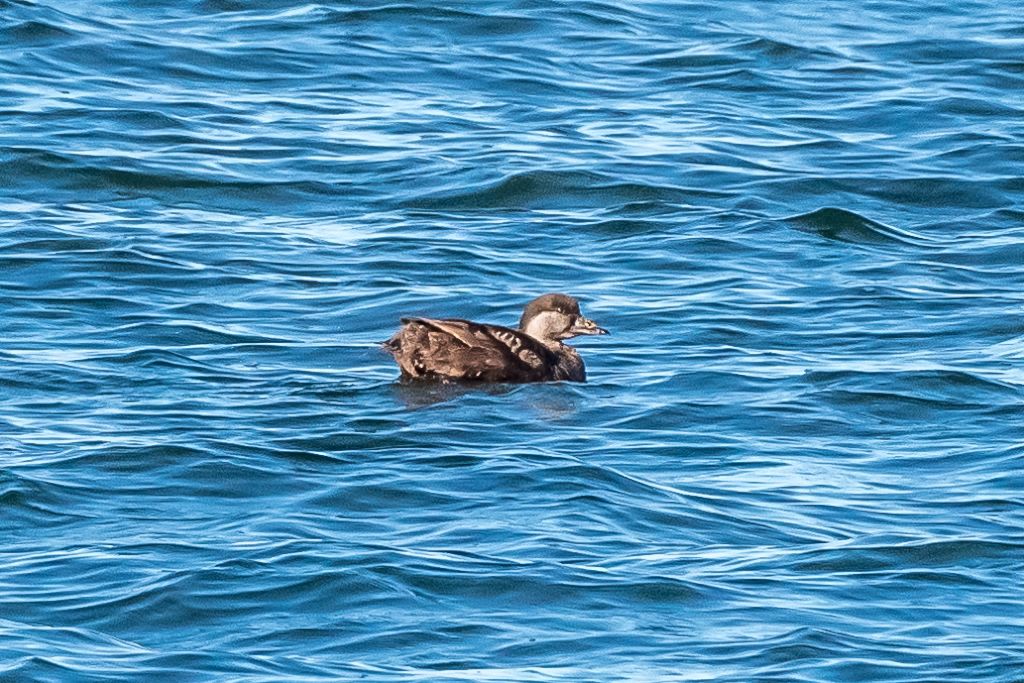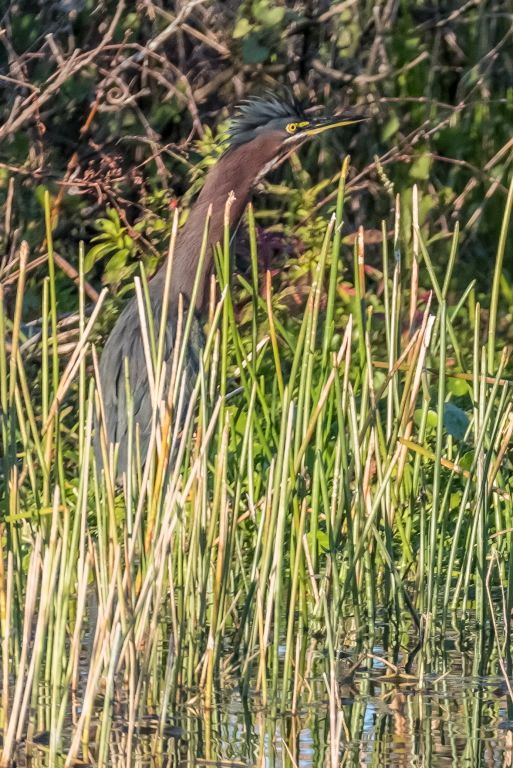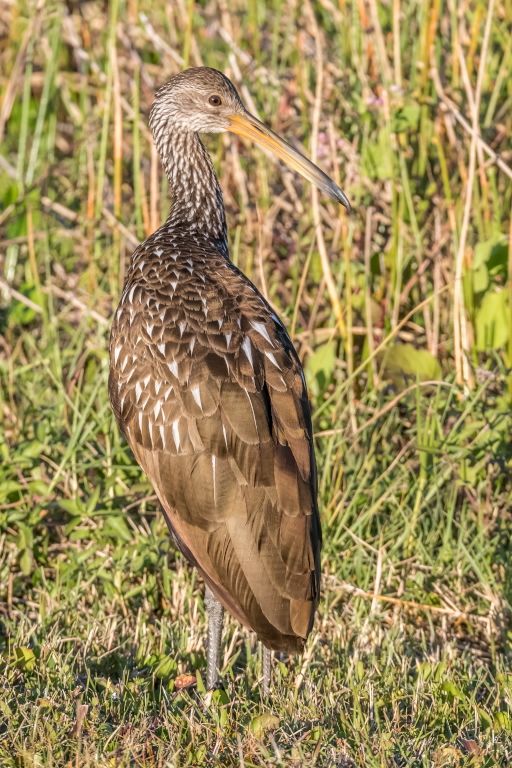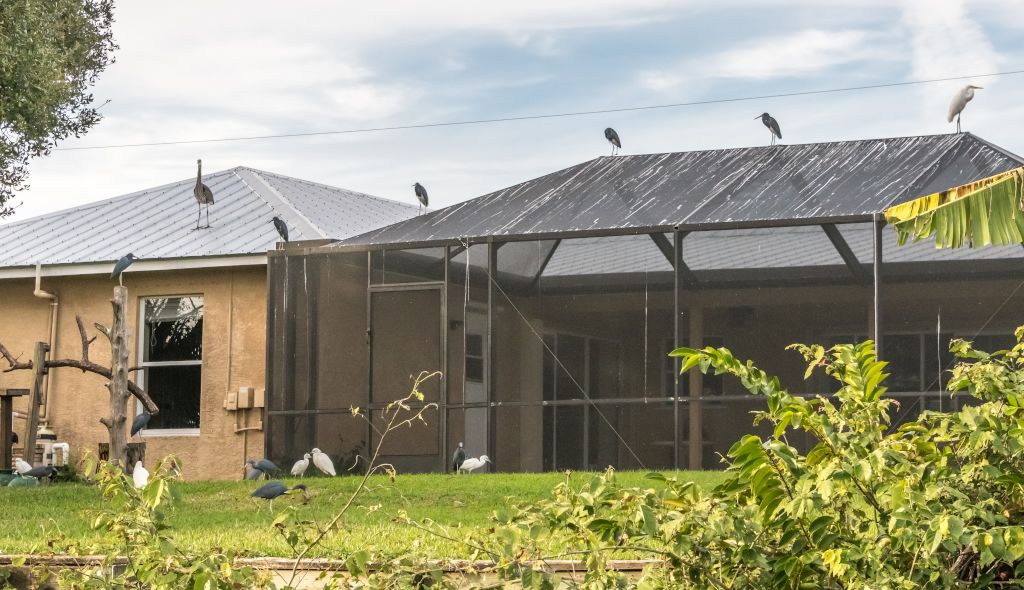“Get your camera and come with me; you have to get a photo of this bird!” Jewel then showed me a cell phone photo she had taken through her telescope of a Gray-headed Swamphen (until a recent name change, Purple Swamphen), identifiable but not completely satisfactory, in her Christmas Count area earlier that very day.
As it was then 3:30 in the afternoon, we still had time to go find the bird and try to get photos before the Christmas Count meeting at 5 pm. After about 45 minutes we found the bird and got some diagnostic photos. At the Count meeting that evening we learned that not only had no Gray-headed Swamphen ever been seen on a prior St Lucie County Christmas Bird Count, but none had ever been previously reported in St Lucie County. In fact, Jewel had to fill out a Rare Bird Report to accompany the photo, for any Gray-headed Swamphen found or reported north of Palm Beach County (where they are regular at Wakodahatchee and Green Cay) is considered suspect and requires all kinds of verification before the report will be accepted. Apparently the experts are not convinced that we mere mortals are able to distinguish between Gray-headed Swamphens and Purple Gallinules.
During the search for the Swamphen, I could not resist taking photos of the Black-bellied Whistling Ducks, Limpkin, and Green Heron we saw there. The Green Heron was a bonus, for Jewel’s team had not seen a Green Heron earlier in the day, so we were able to add another species to her list for her final report. At the report meeting we learned that Black Scoters and Surf Scoters, including males of each, had been seen by the team surveying South Hutchinson Island. The following day Vin Gallogly took me to the reported location and we quickly found a flock of nine Black Scoters, no Surf Scoters, and no males of either species. We also found the two reported female Bufflehead and a Horned Grebe that had not been reported. Photos of each of those species documented the birds we saw, but are not of sufficient quality for me to inflict them upon you, Dear Reader.
On Christmas day we were treated to a boat trip with Deena and Dana Wade who led the team that canvassed the North Fork of the St Lucie River, by boat, during the count. They had reported the very unusual sight of a back yard along a canal where a large number of egrets and herons were gathered around a bird feeder. We traveled along the river to the canal where the feeder had been found and there they were, 36 egrets and herons all at one time: a Great Blue, Tri-coloreds, a Great, several Snowys, a Cattle, and a large number of Little Blues, both adult and juvenile, around the feeder, in the yard and standing guard on the bird-wash covered roof of the house.
In the trees at the water’s edge we found a juvenile and an adult Black-crowned Night Heron that undoubtedly were attracted by the feeder. Curiously there were none of the usual feeder birds that might be expected anywhere in the area. We inquired of a near-by neighbor who happened to be passing us in his boat what he knew about the birds. He told us that he understood the home owner was an eccentric bird photographer who filled the feeder with fish food to attract the fish eating birds, and that the next door neighbors were very upset with the constant collection of the birds that soiled their homes and made so much mess and racket. He also told us that the neighbors had from time to time even resorted to setting off fire crackers to scare off the birds.
On our way to the canal we traveled on the river and saw many of the expected birds, but only one duck: a male Lesser Scaup. During a short stop at the dock at Veteran’s Memorial Park a young Red-shouldered Hawk posed briefly on the fence along the water; and as we were leaving the dock area we saw a Yellow-crowned Night Heron right close by our boat, affording an outstanding photo opportunity.
Back on the river we encountered a young couple in their boat with a motor that had stopped running. Captain Dana offered to tow their boat back to the dock for them. He told them he would have to tie a “bowline” knot on the end the rope to tow them.
This brought back a flood of old Boy Scout memories for me, when we would tie all kinds of knots and the “bowline” was one of the basic knots. It is used to create a non-slip ring at the end of a rope which can be slipped over the bow cleat of another boat for towing purposes. The “bow” of the “bowline” is pronounced like the “bow” of a bow-tie, fiddler’s bow, or a bow and arrow. But it is used to tow a boat by the “bow” of the boat, pronounced like the “bow” by an actor or musician at the end of a play or performance, the “bow” out of an obligation, or like the “bow” of a tree branch (Oh, sorry, that “bow” is spelled “bough.”)
Is it any wonder foreigners trying to learn English consider it the most difficult language to learn? At least learning the difference between Swamphens and Gallinules is not as difficult as trying to determine whether the bowline knot should be pronounced like a bow-tie or a tree bough that might break as in that old children’s song – “Rock-a-bye Baby.” If the bowline knot doesn’t keep the bough from breaking, “down will come baby, cradle and all.” Right on the Swamphen.


